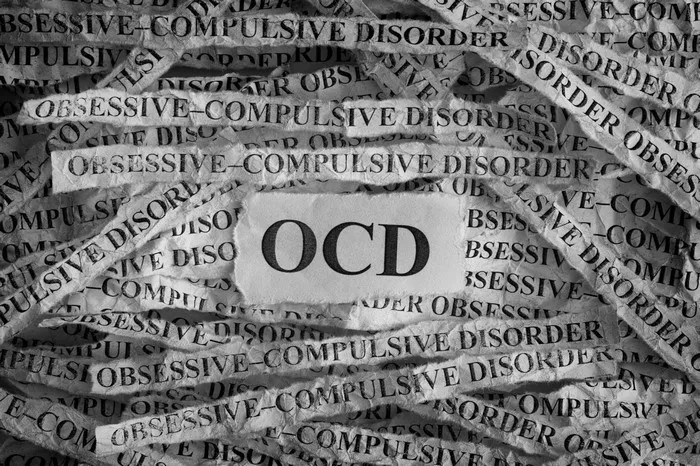Obsessive-Compulsive Disorder (OCD) is a mental health condition characterized by persistent, unwanted thoughts (obsessions) and repetitive behaviors (compulsions). One of the most common subtypes of OCD is Contamination OCD, in which individuals have an extreme fear of germs, dirt, or other sources of contamination. This fear can significantly disrupt daily life, leading to compulsive cleaning, avoidance behaviors, and emotional distress.
In this article, we will explore the causes, symptoms, and treatment options for Contamination OCD, as well as strategies for managing and overcoming this condition.
What Is Contamination OCD?
Understanding OCD and Its Subtypes
Obsessive-Compulsive Disorder (OCD) affects approximately 2-3% of the population and manifests in various forms. Contamination OCD is one of the most common subtypes, in which individuals experience an overwhelming fear of being contaminated by germs, bacteria, bodily fluids, chemicals, or even intangible sources like “bad energy.”
The Core Features of Contamination OCD
Individuals with Contamination OCD struggle with two primary components:
Obsessions (Intrusive Thoughts)
- Persistent fears of coming into contact with germs, dirt, or toxins
- Excessive worry about getting sick or spreading contamination to others
- Anxiety about being “tainted” by touching objects or interacting with people
Compulsions (Repetitive Behaviors)
- Excessive handwashing, showering, or cleaning
- Avoiding places or objects perceived as contaminated
- Changing clothes multiple times a day to prevent contamination
- Seeking reassurance from others about cleanliness and safety
Causes of Contamination OCD
The exact cause of Contamination OCD is not fully understood, but research suggests a combination of biological, psychological, and environmental factors play a role in its development.
1. Biological Factors
Brain Function and Neurotransmitters
Studies have shown that OCD is linked to abnormalities in brain circuits, particularly in areas regulating decision-making, fear response, and habit formation. An imbalance in serotonin, a neurotransmitter that influences mood and behavior, may contribute to the persistence of obsessive thoughts and compulsions.
Genetics
Research indicates that OCD tends to run in families. If a close relative has OCD, there is an increased risk of developing the condition due to genetic predisposition.
2. Psychological Factors
Cognitive Distortions
People with Contamination OCD often engage in catastrophic thinking, believing that even the slightest exposure to germs could lead to severe illness or death.
Perfectionism and Control
Many individuals with OCD struggle with perfectionistic tendencies and an intense need to control their environment to feel safe.
3. Environmental and Trauma-Related Factors
Past Illness or Trauma
A traumatic experience, such as a severe illness, hospitalization, or childhood neglect, may trigger or worsen contamination fears.
Parental Influence
Growing up in an excessively clean or germ-conscious household may contribute to the development of contamination-related anxieties.
Symptoms of Contamination OCD
The symptoms of Contamination OCD can vary in intensity, but they typically fall into three main categories:
1. Obsessions Related to Contamination
- Fear of touching doorknobs, public surfaces, or shared objects
- Anxiety about bodily fluids (saliva, sweat, urine, or blood)
- Worry about food contamination or consuming “unsafe” food
- Fear of chemicals, mold, or environmental toxins
- Concern about contaminating others or being responsible for their illness
2. Compulsive Cleaning and Avoidance Behaviors
- Excessive handwashing (sometimes until the skin is raw or bleeding)
- Frequent showering or excessive personal hygiene rituals
- Overuse of disinfectants or antibacterial products
- Avoidance of public places (e.g., restrooms, hospitals, public transport)
- Washing or changing clothes multiple times a day
- Throwing away objects perceived as “contaminated”
3. Emotional and Psychological Effects
- Severe anxiety and distress when unable to perform compulsions
- Depression and isolation due to avoidance behaviors
- Guilt and shame over perceived inability to control thoughts and actions
- Disrupted daily life (work, school, and social interactions suffer)
Treatment Options for Contamination OCD
Contamination OCD is a treatable condition, and several effective treatment approaches can help individuals regain control over their thoughts and behaviors.
1. Cognitive-Behavioral Therapy (CBT)
CBT is the gold-standard treatment for OCD, particularly a technique called Exposure and Response Prevention (ERP).
Exposure Therapy: Gradually exposing the individual to feared contamination sources (e.g., touching a doorknob without washing hands).
Response Prevention: Encouraging the person to resist compulsions (e.g., delaying or avoiding washing hands after touching an object).
Cognitive Restructuring: Helping individuals recognize and challenge irrational fears about contamination.
2. Medication
Selective Serotonin Reuptake Inhibitors (SSRIs) are commonly prescribed for OCD. Some of the most effective SSRIs for Contamination OCD include:
- Fluoxetine (Prozac)
- Sertraline (Zoloft)
- Fluvoxamine (Luvox)
- Paroxetine (Paxil)
In more severe cases, a combination of medication and therapy may be recommended.
3. Mindfulness and Relaxation Techniques
Mindfulness practices, such as meditation, deep breathing, and progressive muscle relaxation, can help individuals manage OCD-related anxiety. Learning to stay present and accepting discomfort without acting on compulsions is an important coping strategy.
4. Lifestyle Adjustments
Limit Excessive Cleaning: Try to gradually reduce the time spent on cleaning rituals.
Challenge Avoidance Behaviors: Engage in activities that may feel uncomfortable at first, like touching objects without cleaning them immediately.
Reduce Stress: High stress levels can exacerbate OCD symptoms, so finding healthy stress-management strategies (exercise, hobbies, or social support) is crucial.
5. Support Groups and Therapy
Joining an OCD support group or seeking help from a therapist specializing in OCD can provide valuable emotional support and encouragement.
Living with and Overcoming Contamination OCD
Recovering from Contamination OCD takes time, patience, and persistence, but it is entirely possible with the right treatment plan. If you or someone you know is struggling with symptoms of OCD, seeking professional help is the first step toward regaining control and improving quality of life.
By understanding the causes, symptoms, and treatment options for Contamination OCD, individuals can take proactive steps toward managing their condition and leading a more fulfilling, anxiety-free life.
If you suspect you have OCD, reach out to a mental health professional today—help is available, and recovery is possible.
You Might Be Interested In:

